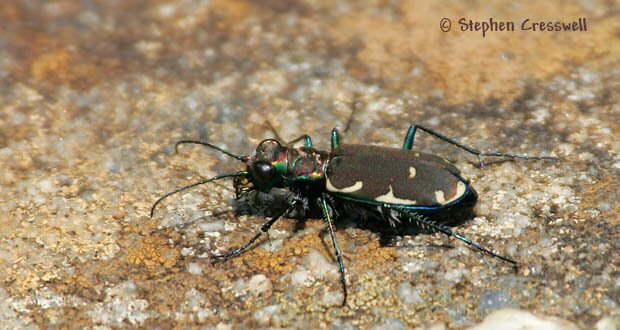
Family: Carabidae
Subfamily: Cicindelinae
Length: 14-16 mm
The scientific name of this species is a real mouthful, and it apparently derives from a place name in Maine, Ancocisco. The common name is a good one, since the species range map basically follows the Appalachians.
The light-colored elytral marks are as shown in the photo, though sometimes the middle mark and spot are joined together. The marks extend a ways along the edges of the elytra, but remain separate there rather than touching each other. The head has a blue-green sheen to it, while the pronotum shows some purple reflections. Viewed head on at a close distance, it is apparent that the labrum is large and has three teeth.
Sandy riverbanks with sparse vegetations provide favored hunting grounds for the Appalachian Tiger Beetle. Egg-laying and larval burrows are often some distance from water.
Allen and Acciavatti, in their 2002 study of West Virginia's Cicindelinae, state that Cicindela ancocisconensis "has not been reported from the western half of the state or the extreme Eastern Panhandle."

Insects of West Virginia